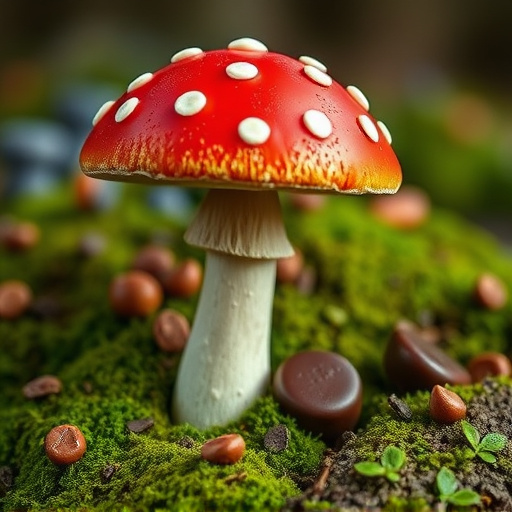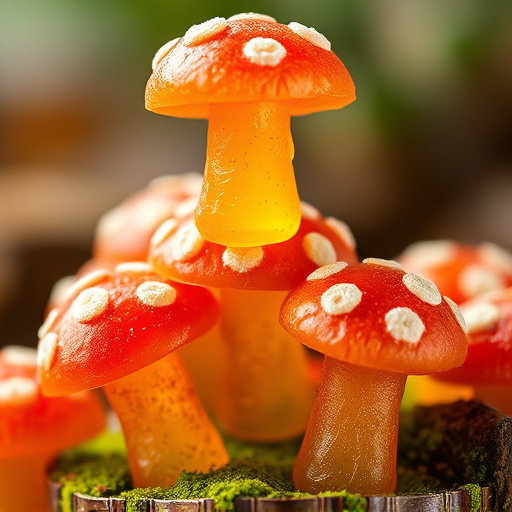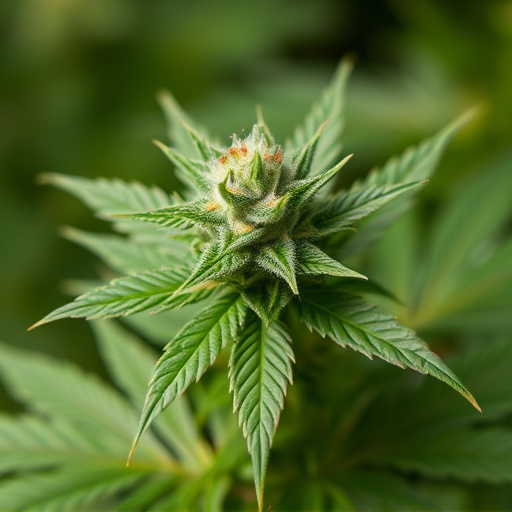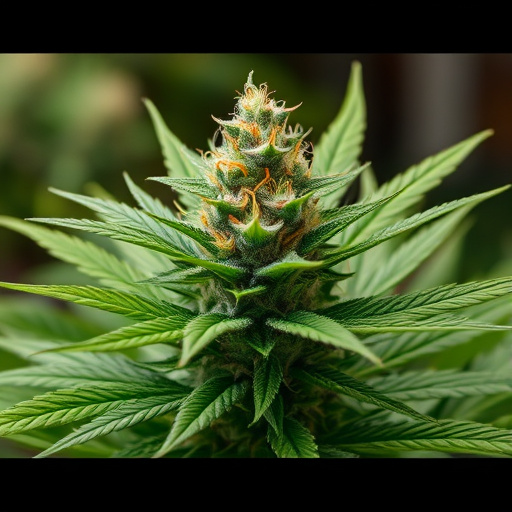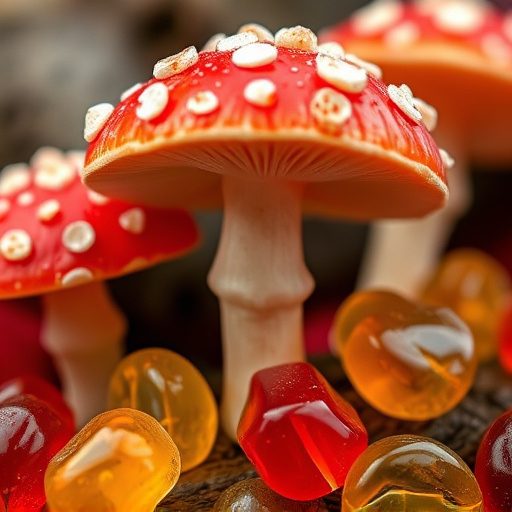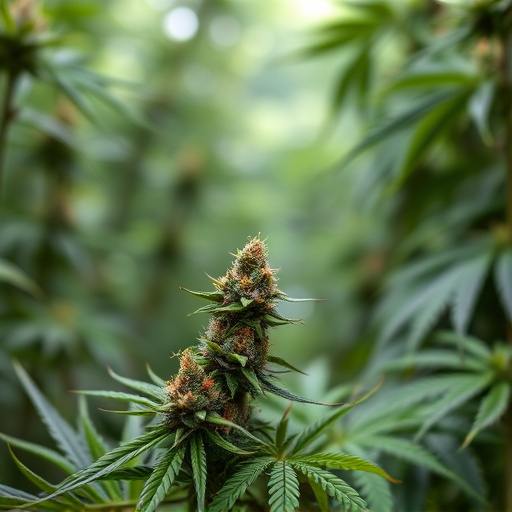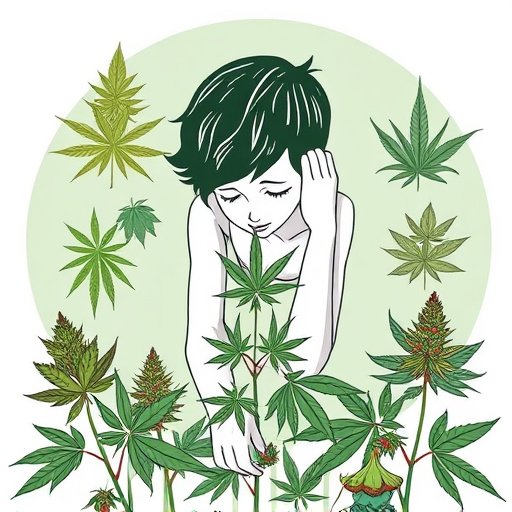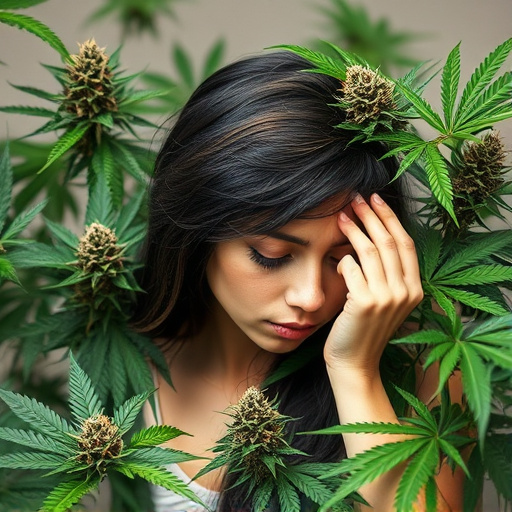While cannabis offers potential as a therapeutic option for depression, it carries significant risks, especially for those with psychotic disorders or family history of such conditions. High-THC varieties can exacerbate symptoms and trigger psychosis, while regular use may lead to dependence and addiction. Sudden cessation after prolonged use can cause withdrawal symptoms affecting mental health. Consulting healthcare professionals is crucial before incorporating cannabis into a treatment plan. Balanced strains with Indica dominance, rich in both THC and CBD, are recommended for alleviating depression symptoms safely through moderation and complementary wellness practices.
In today’s legalizing world, cannabis flower is gaining attention for its potential therapeutic benefits, especially in managing symptoms of depression. However, it’s crucial to understand the risks associated with this natural remedy. This article explores the potential dangers of cannabis consumption, focusing on its effects on mental health. We delve into how specific strains can be used responsibly, while also offering safe use practices to mitigate risks, ensuring a balanced approach to cannabis strains for depression.
- Potential Risks Associated with Cannabis Flower Consumption
- Cannabis Strains for Depression: Balancing Benefits and Dangers
- Mitigating Risks: Safe Use Practices for Cannabis Flower
Potential Risks Associated with Cannabis Flower Consumption

Cannabis flower, while known for its potential therapeutic benefits, particularly in treating conditions like depression through certain cannabis strains for depression, is not without risks. One of the primary concerns is the impact on mental health. For individuals with pre-existing psychotic disorders or a family history of such conditions, cannabis consumption can exacerbate symptoms and even trigger psychosis, especially when consuming high-THC varieties. The risk increases with higher concentrations of THC, the primary psychoactive compound in cannabis.
Another significant risk is the potential for dependence and addiction. Regular use can lead to tolerance, requiring higher doses to achieve the same effects. This increased consumption heightens the likelihood of developing a dependency on cannabis. Additionally, sudden cessation after prolonged use may result in withdrawal symptoms, including irritability, insomnia, and anxiety, which can further impact mental health and overall well-being.
Cannabis Strains for Depression: Balancing Benefits and Dangers

Cannabis has gained attention as a potential treatment for various mental health conditions, including depression. While some people find relief and an improvement in mood through specific cannabis strains, it’s crucial to approach this alternative therapy with caution. Different strains offer varying levels of THC (tetrahydrocannabinol) and CBD (cannabidiol), which can significantly impact the user’s experience and potential risks.
For depression, balancing the benefits and dangers is essential. High-THC strains might provide initial relief but can also increase anxiety and paranoia in some individuals. On the other hand, CBD-rich strains are often preferred for their potential therapeutic effects without the intoxicating properties. However, it’s important to consult with healthcare professionals before incorporating cannabis into a treatment plan, as individual responses may vary, and proper dosage is critical to avoiding adverse effects.
Mitigating Risks: Safe Use Practices for Cannabis Flower
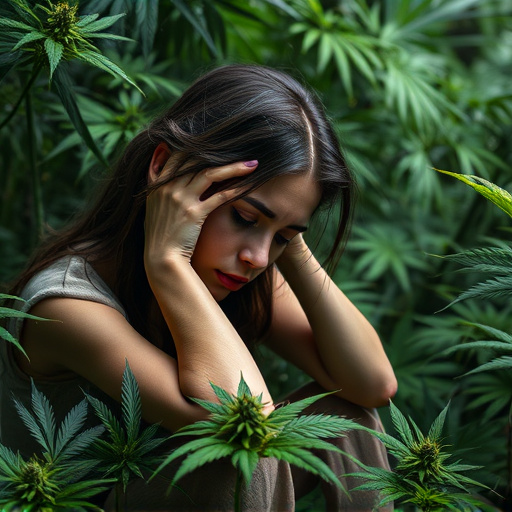
To mitigate risks associated with cannabis flower, it’s crucial to adopt safe use practices. One of the most common and well-studied benefits of cannabis is its potential to alleviate symptoms of depression. However, as with any substance, misuse can lead to adverse effects. The key to safe use lies in understanding your strain choices; different cannabis strains for depression may have varying levels of THC and CBD, each impacting mood and cognition differently. Balanced ratios, such as those found in certain Indica-dominant strains known for their calming properties, can be a better fit for managing depressive symptoms without causing anxiety or paranoia often linked to high-THC products.
Another essential practice is to start low and go slow. Begin with small doses and gradually increase as needed to avoid overwhelming your system. Consistency is also vital; regular usage may help build up tolerance, allowing for more effective management of depression symptoms over time. Additionally, maintaining a healthy lifestyle—including adequate sleep, exercise, and proper nutrition—in conjunction with cannabis use can further enhance its potential benefits while minimizing risks associated with any substance.
While cannabis flower offers potential therapeutic benefits, especially for managing symptoms of depression, it’s crucial to recognize and mitigate associated risks. The right cannabis strain for depression should be chosen carefully, considering individual tolerance and preferences. Safe use practices, such as starting with low doses and gradually increasing, can help minimize adverse effects like anxiety or paranoia. Continual research and open dialogue with healthcare providers are essential to navigating the balance between cannabis strains for depression and their potential dangers.
